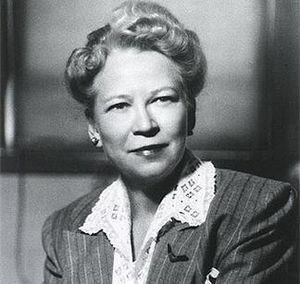Edith Quimby facts for kids
Quick facts for kids
Edith Smaw Hinckley Quimby
|
|
|---|---|
 |
|
| Born | July 10, 1891 |
| Died | October 11, 1982 (aged 91) |
| Spouse(s) | Shirley Leon Quimby |
| Scientific career | |
| Fields | Radiology |
Edith Hinkley Quimby (born July 10, 1891 – died October 11, 1982) was an American scientist who studied medicine and physics. She is known as one of the people who helped start the field of nuclear medicine. This is a special area of medicine that uses tiny amounts of radioactive materials to help doctors see what's happening inside the body or to treat diseases like cancer.
Edith Quimby's work focused on using X-rays and other forms of radiation for both finding out what was wrong with patients (diagnosis) and treating them (therapy). A very important part of her work was making sure that both the people handling these radioactive materials and the patients receiving treatment were kept safe. She wanted to make sure patients got only the smallest amount of radiation needed.
Early Life and School
Edith Quimby was born in Rockford, Illinois, on July 10, 1891. She was one of three children. Her father, Arthur S. Hinkley, was a farmer and an architect.
In 1912, she finished her studies at Whitman College in Washington. She earned a bachelor's degree in both mathematics and physics. After teaching at a high school for a short time in Oregon, she received a special scholarship in 1914. This scholarship helped her study for her master's degree at the University of California, which she completed in 1916.
Career and Achievements
In 1919, Edith Quimby moved to New York City. She started working at the Memorial Hospital for Cancer and Allied Diseases. She was an assistant physicist, helping a scientist named Gioacchino Failla. It was very unusual for a woman to have such a job at that time. She became an associate physicist there in 1932. She worked with Failla for over 40 years.
In 1942, she joined the Center for Radiological Research at Columbia University's medical school. Failla also led this center. She continued her important work there until 1978. At Memorial Hospital, her research looked at how much radiation was safe to use in medicine. She studied the energy given off by different radioactive materials that could be used in nuclear medicine. She also looked at how much radiation the body absorbed from these different sources. Her work also explored how man-made radioactive materials could be used to treat cancer and for other medical research.
In 1941, she became an assistant professor of radiology at Cornell University Medical College. The next year, she became an associate professor of radiation physics at Columbia University. She became a full professor in 1954 and retired in 1960.
Edith Quimby received many awards for her work throughout her career. She was also part of several important science groups. In 1940, she was the first woman to receive the Janeway Medal from the American Radium Society. The next year, she won the Gold Medal from the Radiological Society of North America. This award was given because her work "placed every radiologist in her debt," meaning she helped all doctors who use radiation. In 1954, she was elected president of the American Radium Society. In 1963, the American College of Radiology also gave her its gold medal. She was one of the first members of the American Association of Physicists in Medicine. This group later created a special award in her honor for lifetime achievements.
Important Research
In 1962, Edith Quimby published a paper called "Late Radiation Effects in Roentgen Therapy for Hyperthyroidism." In this paper, she suggested that doctors should stop using a type of radiation therapy called Roentgen therapy. She believed they should wait until they understood more about how this treatment affected patients over a long time. This showed her strong focus on patient safety.
Personal Life
Edith Quimby married Shirley Leon Quimby in 1915.
See also
 In Spanish: Edith Quimby para niños
In Spanish: Edith Quimby para niños

